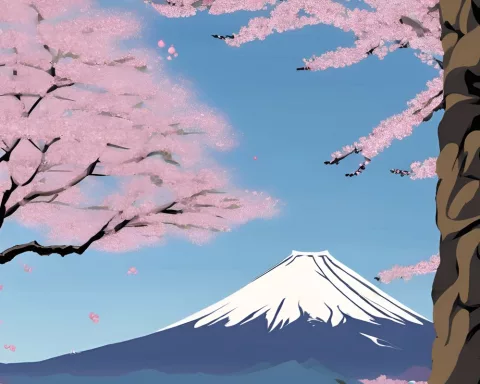Cape Town’s TER Scottsdene Pump Station is a groundbreaking project aimed at increasing the availability of treated effluent and reducing the city’s reliance on potable water supplies. It plays a crucial dual role, increasing the availability of treated effluent and significantly reducing reliance on potable water supplies. The project symbolizes Cape Town’s unwavering dedication to sustainable water management and becoming a water-conscious city.
What is Cape Town’s innovative effluent pump station?
The TER Scottsdene Pump Station is a groundbreaking project in Cape Town aimed at increasing the availability of treated effluent and reducing the city’s reliance on potable water supplies. This alternative water source, treated for non-drinking uses, undergoes a rigorous process at WWTWs to remove pollutants, making it safe for discharge into the environment. Upon completion, the pump station is projected to deliver six megalitres of treated effluent per day.
Cape Town’s Vision for Water Sensitivity
As an emerging city nestled at the edge of Africa, Cape Town has set off on a revolutionary path towards becoming a water-conscious city. It has invested R49.2 million in the groundbreaking Treated Effluent Re-Use (TER) Scottsdene Pump Station project, which marks a significant turning point in urban water management practices.
Located within the Scottsdene Wastewater Treatment Works (WWTW), the project was officially launched in September 2023, signaling a sea change in resource management. More than just the creation of a pump station, this initiative represents a radical shift from conventional to efficient practices. The inaugural phase of the project is expected to conclude by February 2025, and it promises to significantly enhance the provision of treated effluent.
The Multifaceted Role of the TER Scottsdene Pump Station
The TER Scottsdene Pump Station plays a crucial, dual role. Its design aims to increase the availability of treated effluent and, at the same time, significantly reduce the city’s reliance on potable water supplies. This alternative water source, treated for non-drinking uses, undergoes a rigorous process at WWTWs to remove pollutants, making it safe for discharge into the environment. A portion of this treated effluent is further filtered and then distributed for reuse.
Upon completion, the pump station is projected to deliver six megalitres of treated effluent per day. Such an output would reinforce the Scottsdene treated effluent network, currently spanning 3.6km, with plans in the pipeline to extend it to 14km beginning in July 2024.
A City-Wide Approach to Water Management
Water management in Cape Town also includes nine other WWTWs. These facilities generate treated effluent through a complex network of pipes, 31 extraction points, and nine collection points scattered across the city. This treated effluent proves to be invaluable, catering for a wide range of industries and fulfilling the construction and irrigation requirements for sports fields, parks, schools, and golf courses.
A similar project to the TER Scottsdene Pump Station is the TER Zandvliet Link, which is currently in its final expansion phase. This project connects effluent networks from Zandvliet and Macassar WWTWs via a 400mm diameter High-Density Polyethylene (HDPE) pipeline and associated infrastructure. This amalgamation of the two networks enables pumping from a single source into both systems, epitomizing the city’s commitment to efficiency and integration.
Towards a Future of Water Consciousness
The funding allocated to these projects exemplifies the city’s commitment to water conservation and efficient usage. As noted by Councillor Zahid Badroodien, the City’s Mayoral Committee Member for Water and Sanitation, “Our goal is to transform Cape Town into a water-conscious city where we actively conserve our precious water resources, promote water efficiency, and explore the potential of treated effluent as a practical alternative. To achieve this, the city is constantly extending its treated effluent network to cater to more customers. At present, our network extends over 249 km, and with continued investment, this will significantly expand in the future.”
The TER Scottsdene Pump Station project and its counterparts symbolize more than just infrastructural evolution. They represent Cape Town’s unwavering dedication to sustainable water management and an adamant resolve to become a water-conscious city. As we embark on this transformative journey, it’s important to remember that water is not just a resource; it is the source of life. As Cape Town leads the way, other cities may follow, leading us towards a future where water is appreciated and conserved as the invaluable treasure it truly is.
What is the goal of Cape Town’s TER Scottsdene Pump Station project?
The TER Scottsdene Pump Station project aims to increase the availability of treated effluent and reduce the city’s reliance on potable water supplies. The project represents Cape Town’s commitment to sustainable water management and becoming a water-conscious city.
What is treated effluent?
Treated effluent is wastewater that has undergone a rigorous process to remove pollutants, making it safe for discharge into the environment. It is an alternative water source that can be used for non-drinking purposes such as irrigation, construction, and industrial uses.
What is the output of the TER Scottsdene Pump Station?
Upon completion, the TER Scottsdene Pump Station is projected to deliver six megalitres of treated effluent per day. This will reinforce the Scottsdene treated effluent network, currently spanning 3.6km, with plans in the pipeline to extend it to 14km beginning in July 2024.
How many other WWTWs are there in Cape Town?
There are nine other WWTWs in Cape Town. These facilities generate treated effluent through a complex network of pipes, 31 extraction points, and nine collection points scattered across the city.
What is the TER Zandvliet Link project?
The TER Zandvliet Link project is a similar project to the TER Scottsdene Pump Station. It connects effluent networks from Zandvliet and Macassar WWTWs via a 400mm diameter High-Density Polyethylene (HDPE) pipeline and associated infrastructure. This amalgamation of the two networks enables pumping from a single source into both systems, epitomizing the city’s commitment to efficiency and integration.
What is Cape Town’s vision for water management?
Cape Town’s vision for water management is to transform into a water-conscious city where they actively conserve their precious water resources, promote water efficiency, and explore the potential of treated effluent as a practical alternative. The city is constantly extending its treated effluent network to cater to more customers, currently spanning over 249 km, with continued investment, it will significantly expand in the future.










